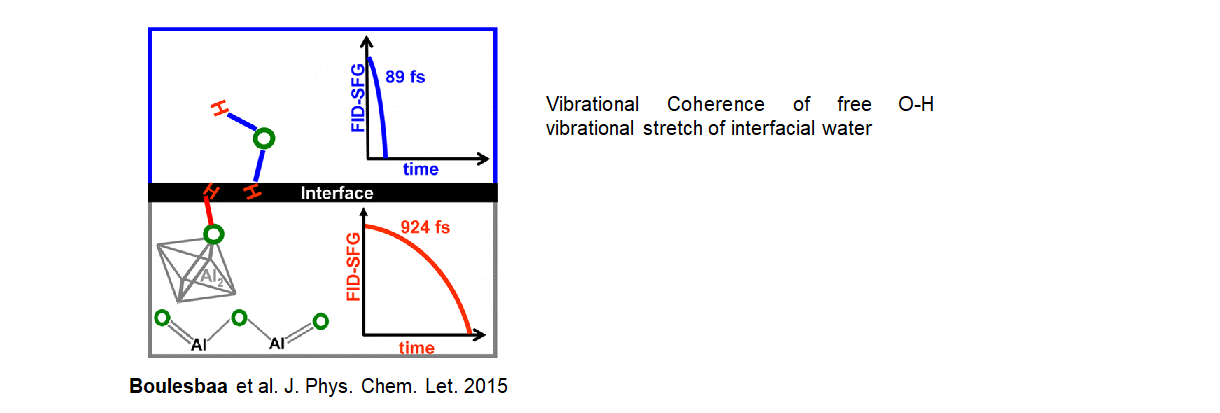Research themes & capabilities


Our group uses various optical techniques to investigate ultrafast phenomena that take place in nanomaterials, biomolecules and their interfaces during brief times on the order of femtosecond time-scales (one millionth of one billionth of a second). We incorporate a Ti:Sa femtosecond laser amplifier system to investigate ultrafast dynamics of electronic structures of nanomaterials and vibrational energy & coherence within chemical bonds.
I. Nanomaterials for photovoltaic applications: Due to their strong interaction with light, nanomaterials are good platform candidates for photovoltaic devices such as solar-cells and photodetectors. The conversion efficiency of light into electricity in these devices relies on how efficiently excitons (bound electron-hole pairs) in the nanomaterial are photogenerated and then dissociated through charge transfer to an acceptor. Sometimes, the light absorbed by the nanomaterial is not fully consumed for the generation of “useful” excitons, but an important portion of energy is consumed as dissipated heat. To understand this mechanism, we incorporate ultrafast spectroscopy to examine different nanomaterials, with a goal of overcoming this problem through designing and tailoring the chemical and physical structure of the nanomaterial. To address the inefficiency of exciton dissociation (charge transfer), based on ultrafast spectroscopy investigations, we design hybrid nanomaterials (donor-acceptor composites) with the highest possible efficiency of charge transfer process.

A. Atomic force microscopy (AFM) image of a 2D-WS2 monolayer covered with a single layer of CdSe/ZnS quantum dots (0D-QDs). The bottom right inset shows a magnified portion of the edge as indicated, and the top left inset shows the height profile measured along the dotted line. Red circles indicate 0D-QDs aggregates.
B. Photoluminescence map of sample A showing that the 0D-QDs emission is bright (green) outside the 2D-WS2 crystal, and it is quenched at the heterostructure (dark triangle).
C. Schematic representation of formation of hybrid excitons (electron at the 0D and hole the 2D) upon photoexcitation.
Boulesbaa et al. J. Am. Chem. Soc. 2106.
II. Nanomaterials for biomedical applications: In the past, the employment of nanomaterials in the biomedical field was almost limited to drug delivery and bio labeling. In recent years however, noble metal nanoparticles, such as gold, were used for photothermal therapy in cancer treatment. This is due to their unique way of interacting with light that distinguishes them from other materials. When the frequency of light matches that of the collective motion of electrons at the surface of a metal nanoparticle, the so-called localized surface plasmons resonance (LSPR) takes place, and consequently, the nanoparticle strongly absorbs photons with that frequency, which increases its temperature. Clinically, the tumor area is injected with gold nanoparticles, followed by shining a laser with LSPR frequency to heat the nanoparticles, which burns and destroys the cancer cells. In our Lab, we use ultrafast spectroscopy to track down the energy deposited through laser from absorption by the nanoparticle until its transfer to the biomolecule and propagation within the chemical bonding network, leading to the breaking of chemical bonds.
III. Quantum Coherent Control: Quantum coherent control (QCC) relies on the idea of manipulating the quantum states in molecular systems and materials using lasers with tailored temporal and spatial shapes. Combining this capability with the ability to design specific nanostructures can lead to drastic developments in the fields of quantum computing, data storage, and telecommunications. Our group aims to design plasmonic nan-structures resonating with shaped laser pulses in the infrared spectral regions to open new horizons for the photo-detection technology beyond the visible spectrum of light.
